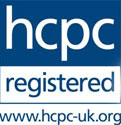EMDR
What is EMDR?
EMDR Therapy stands for Eye Movement and Desensitisation and Reprocessing Therapy. It is based on the idea that the body can naturally heal itself and often this happens when we are asleep, particularly in the rapid eye movement (REM) stage of sleep. It was first used to help clients with trauma in 1987, but has since been used for other difficulties linked to anxiety and depression. Our brains have natural mechanisms for storing information and understanding what is happening, however, when we are in a traumatic situation, our brains can find it difficult for these normal processes to occur. Research has found that these ‘unprocessed’ memories are often stored in different parts of the brain. The EMDR therapy aims to create connections between different memory networks, allowing the traumatic memories to be processed in a natural way. EMDR can be completed remotely as well as face to face.
How is it different from CBT?
In an EMDR session, the therapist uses Bilateral Stimulation (BLS) to mimic the eye movements that are seen in REM sleep. This can be done with the client following the clients hand from left to right. Other ways of doing this include tapping on the body, usually the knees, or using headphones with right and left sounds. In between the BLS sets, the therapist asks questions about thoughts, feelings and sensations in the body. It is a protocol based therapy, with specific questions that are asked. It is different to Trauma Focused CBT in that you do not need to recount in detail a traumatic episode to the therapist.
EMDR is recognised by the World Health Organisation (WHO) and the National Institute for Health and Care Excellence (NICE). Please see the EMDR UK Association for full details:



